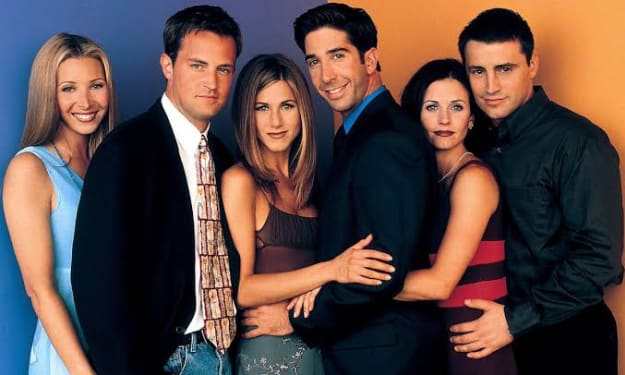"The Complex Evolution of Zombies: From African Roots to Western Monsters"
"The Cultural Journey of the Undead: How Zombies Transformed from Victims to Monsters in Western Pop Culture"

The concept of animated corpses has been a recurring theme in stories from diverse cultures around the world, spanning recorded history. These tales of the undead have fascinated and terrified people for centuries. Yet, while the idea of reanimated corpses is universal, the concept of zombies, as we know them today, has a unique lineage with deep roots in Equatorial and Central Africa.
One of the first clues to this distinctive lineage lies in the word "zombie" itself. The exact etymological origins of the term remain elusive, but several candidates offer valuable insights. For instance, the Mitsogho people of Gabon use the word "ndzumbi" to refer to a corpse, while the Kikongo word "nzambi" has a range of meanings, from the supreme being to an ancestor with superhuman abilities or another deity. In certain languages spoken in Angola and the Congo, "zumbi" is associated with an object inhabited by a spirit or someone who has returned from the dead. These linguistic connections hint at shared cultural beliefs across different African communities.
One such shared belief is the notion that, after death, a person's spirit can inhabit a physical object, offering protection and bestowing good luck. Variations of this belief can be found in various parts of Africa. These spiritual beliefs and cultural practices have laid the foundation for the concept of zombies as we know them today.
A significant historical turning point in the evolution of the zombie concept occurred during the transatlantic slave trade. Between 1517 and 1804, France and Spain enslaved hundreds of thousands of African people, forcibly transporting them to the Caribbean, where the modern nations of Haiti and the Dominican Republic now exist. In this new, unforgiving environment, the religious beliefs of enslaved Africans merged with the Catholic traditions of the colonial authorities, giving rise to a unique syncretic religion known as "vodou."
In some vodou beliefs, the soul of an individual can be captured and stored, effectively becoming a body-less entity known as a "zombi." Alternatively, if a corpse is not given proper attention soon after death, a sorcerer, known as a "bokor," could capture the body and transform it into a soulless zombi, obedient to their commands. Historically, these zombis were believed to be used as laborers who required neither food nor rest, contributing to the enrichment of their captors. This form of zombification was a grim reflection of the horrors of enslavement experienced by many Haitian people. It was a fate so cruel that not even death could offer release. The zombi was deprived of an afterlife, sentenced to eternal subjugation. Consequently, within Haitian culture, zombis are often regarded as victims deserving of sympathy and care.
However, the concept of the zombie took a drastic turn with the onset of the United States' occupation of Haiti in 1915. During this period, Western popular culture viewed Haiti through a distorted lens, characterized by racism and false accounts of Black Haitians engaging in devil worship and human sacrifice. In this atmosphere, zombie stories gained traction and captivated the American imagination. In 1932, the film "White Zombie" made its debut, set in Haiti. The film's central figure, a white woman, was the primary object of sympathy, not the enslaved workforce. This marked a shift in the portrayal of zombies, where they were no longer objects of pity but became menacing figures.
In the ensuing decades, zombies featured in numerous American films, often with loose references to Haitian culture. Some even ventured into strange territories, involving aliens and Nazis. Then, in 1968, the groundbreaking film "Night of the Living Dead" emerged, depicting a group of strangers striving to survive an onslaught of slow-moving, flesh-eating creatures. Strikingly, the director of the film never envisioned these beings as zombies; it was the audience that recognized them as such. This marked the beginning of a new era for the concept of zombies, where they became associated with an insatiable craving for flesh, with a particular predilection for brains, as seen in the 1985 film "The Return of the Living Dead."
In these and subsequent films, sorcerers no longer controlled zombies; they became the monsters themselves. Additionally, influenced by the 2002 film "28 Days Later," zombification became a contagious phenomenon, further shaping the evolution of the zombie concept.
For decades, artists worldwide have harnessed the imagery of zombies to shed light on the social ills and anxieties of their respective times. From critiques of consumer culture to reflections on the global lack of disaster preparedness, zombies have served as powerful metaphors and symbols. Yet, in the process, American popular culture often overshadowed the origins of the zombie, cannibalizing its original significance and transforming the victim into the monster. This transformation encapsulates the complex evolution of the zombie concept, from its African roots to its multifaceted portrayal in Western culture.
About the Creator
Enjoyed the story? Support the Creator.
Subscribe for free to receive all their stories in your feed. You could also pledge your support or give them a one-off tip, letting them know you appreciate their work.






Comments (1)
fantastic writing!